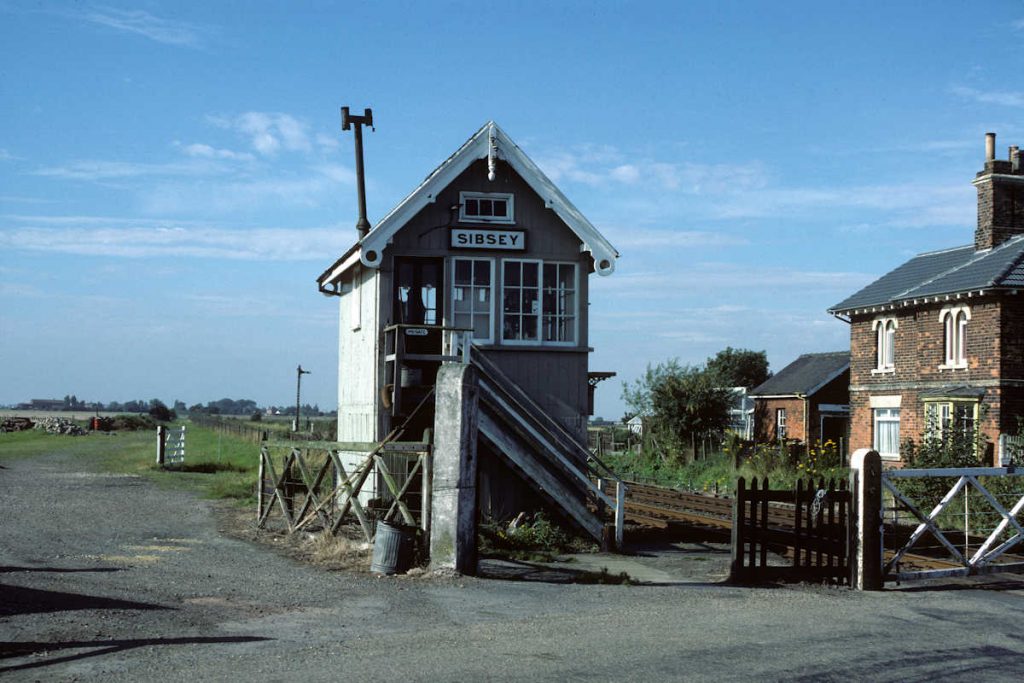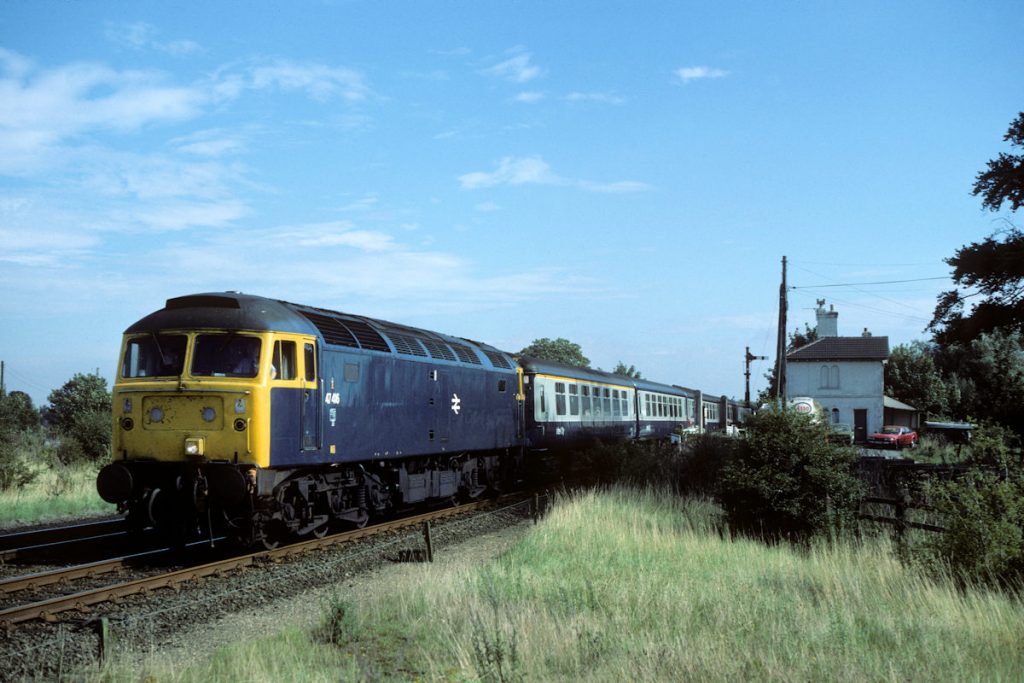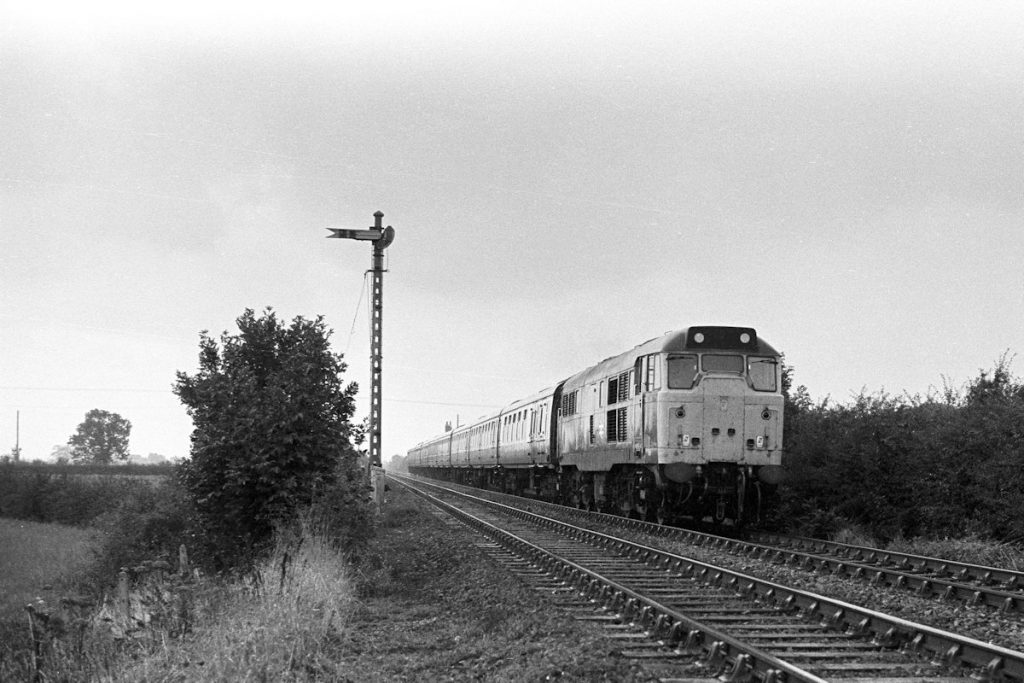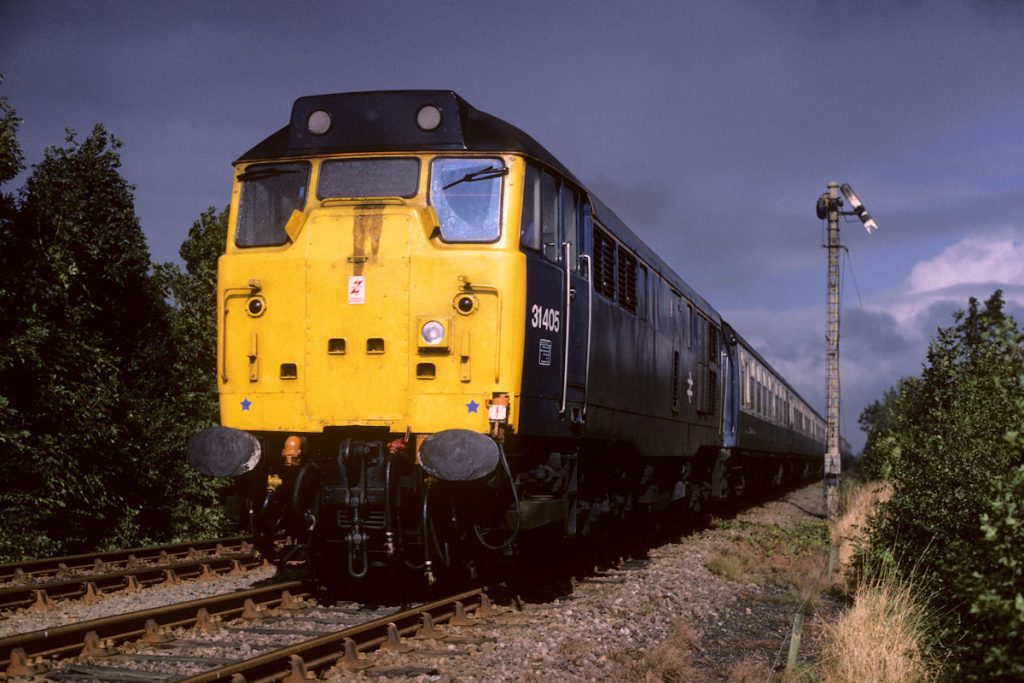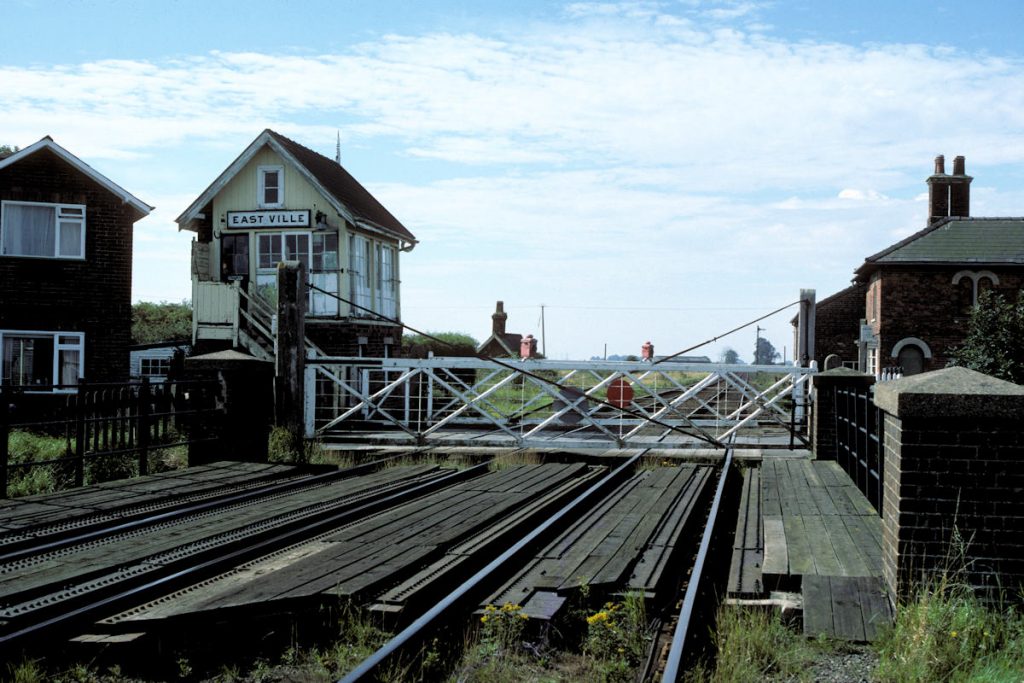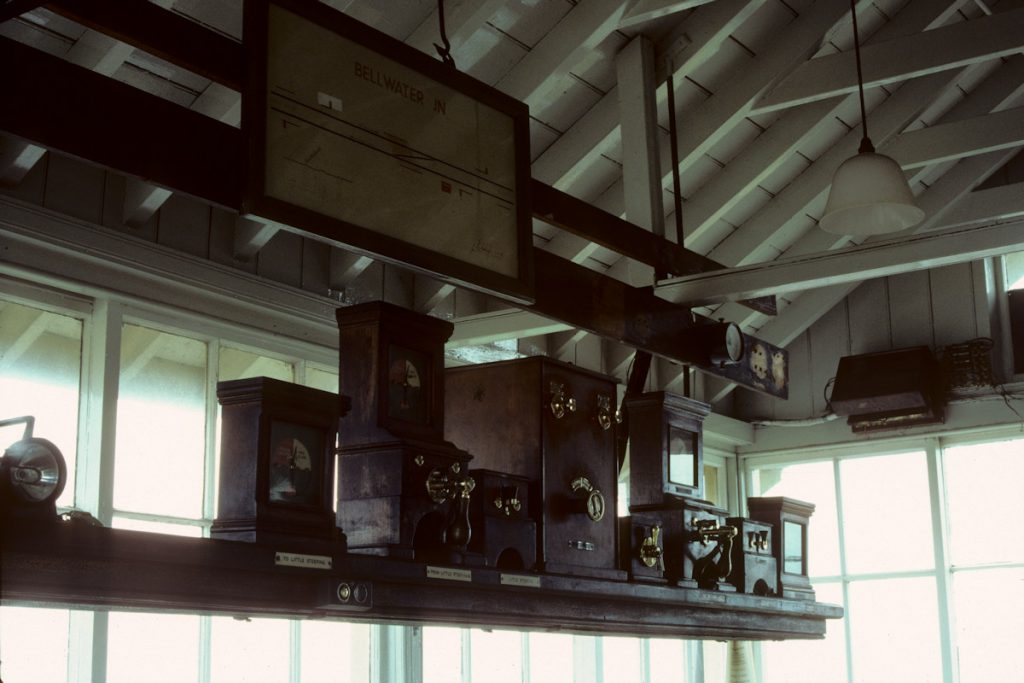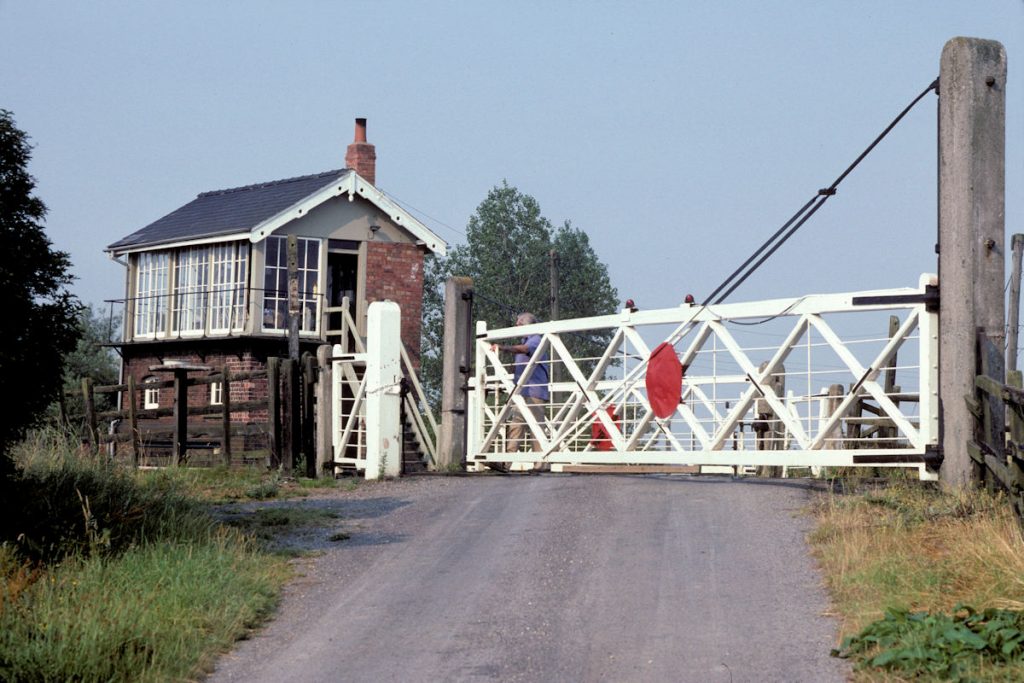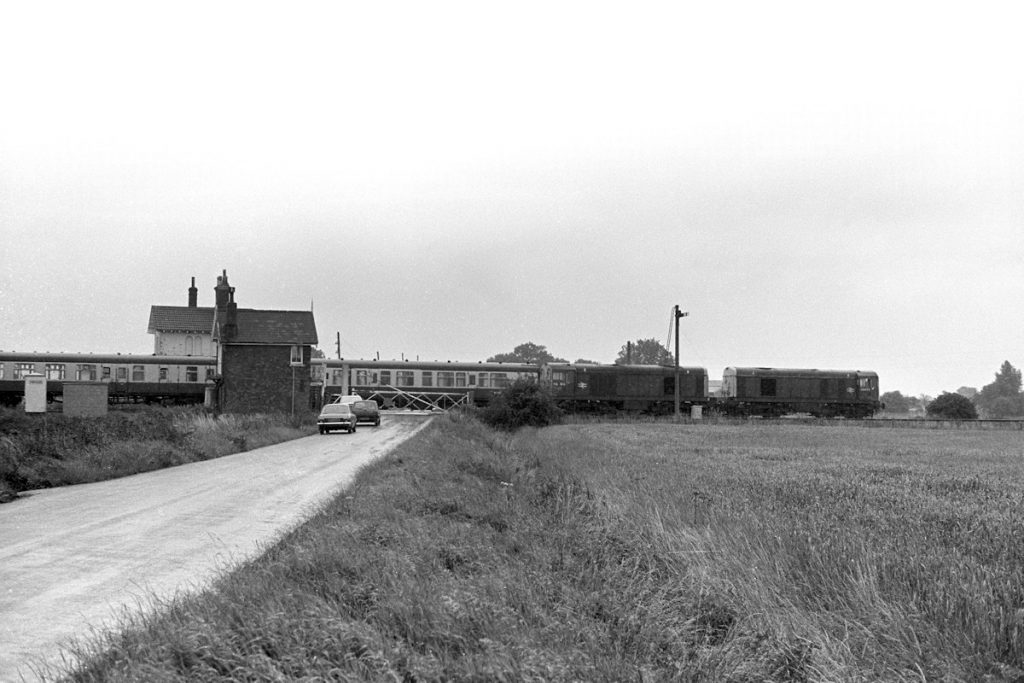Sibsey
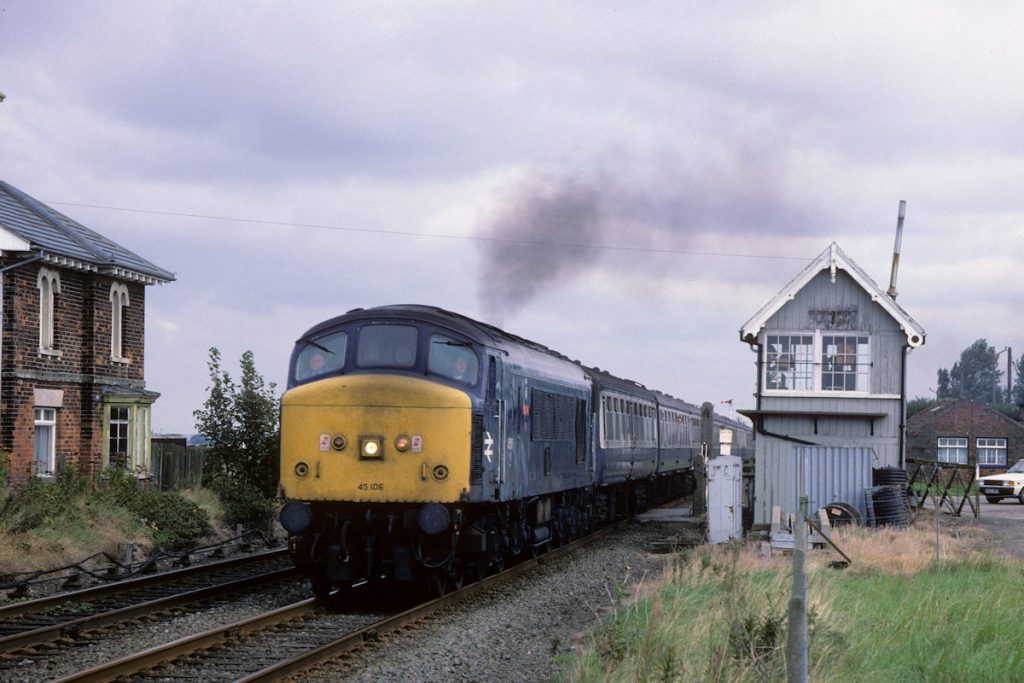
For many years, trains from Sheffield to Skegness travelled by both the Great Central/Joint Line and via Nottingham. The latter was a Summer Saturday only out-and-back working that left Sheffield shortly after 7am and arrived in Skegness soon after 10 am. After a prompt 30-40 minute run-round, it then returned to Sheffield. On its return journey on Saturday 26th September 1987, BR Class 45 Peak No. 45106 accelerates from a signal-check at Sibsey to take the single line to Boston with 1E02, the 10.52 (SO) Skegness to Sheffield via Nottingham. Photo: Alan Jones.
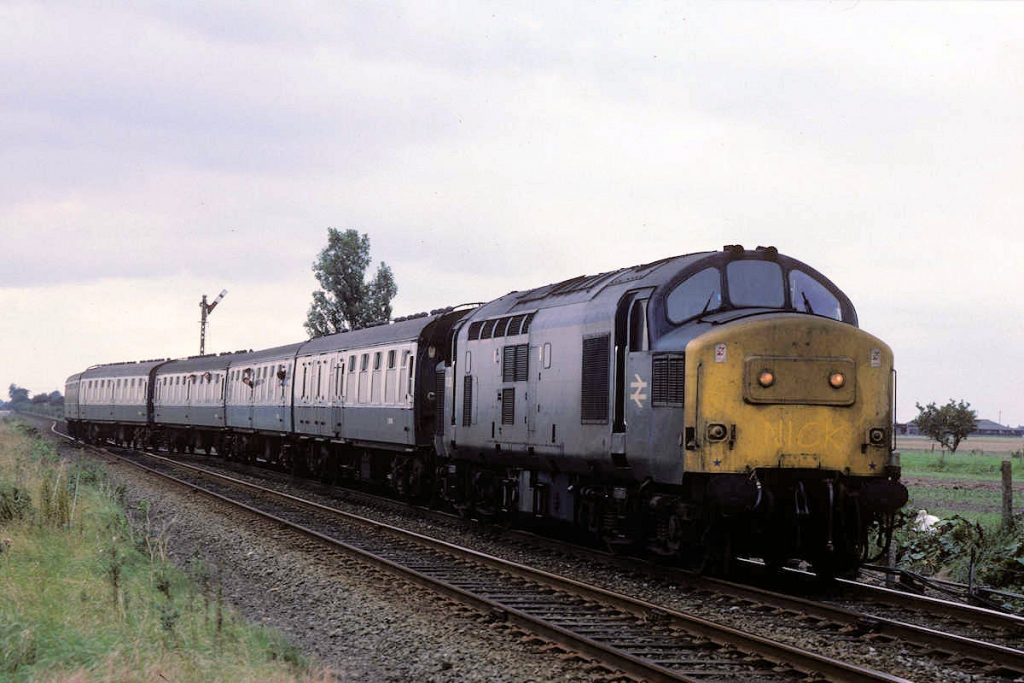
One of the early 1980s cost cutting measures implemented by BR on the Skegness line was the singling of the line between Hubbert's Bridge and Sibsey, with a passing loop at Boston station. The Down line was retained East of Boston, but in order to make use of the existing trailing crossover at Sibsey to regain the double track the Down line had to be slewed, resulting in an awkward 20 mph speed restriction. Clanking over the pointwork, a very grubby 37239 works a Grantham to Skegness additional on September 26th 1987. Photo: Alan Jones.
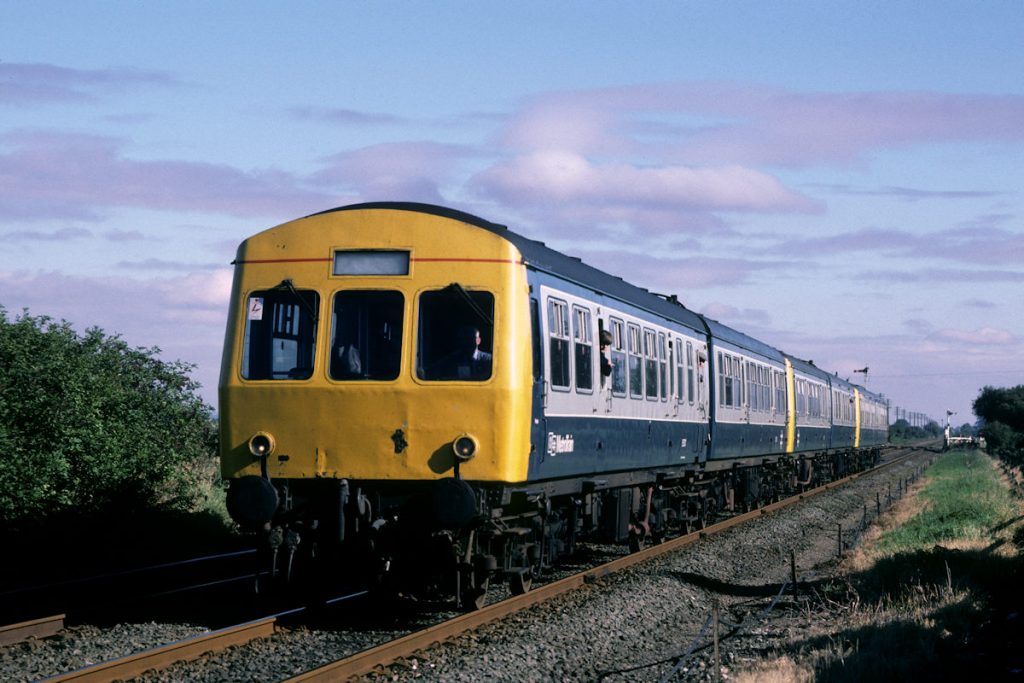
On Summer Saturdays the usual 2-car DMU formations on the Skegness Line were often strengthened with units brought in from elsewhere. In this view at Sibsey on Saturday September 26th 1987, Neville Hill-allocated E53137 (with MetroTrain branding) is performing such a role on the 09.46 Skegness to Nottingham. Even in the 1980s, before the widespread availability of budget airlines, traffic to holiday resorts such as Skegness was reasonable and the railway played a significant part. Photo: Alan Jones.
Old Leake
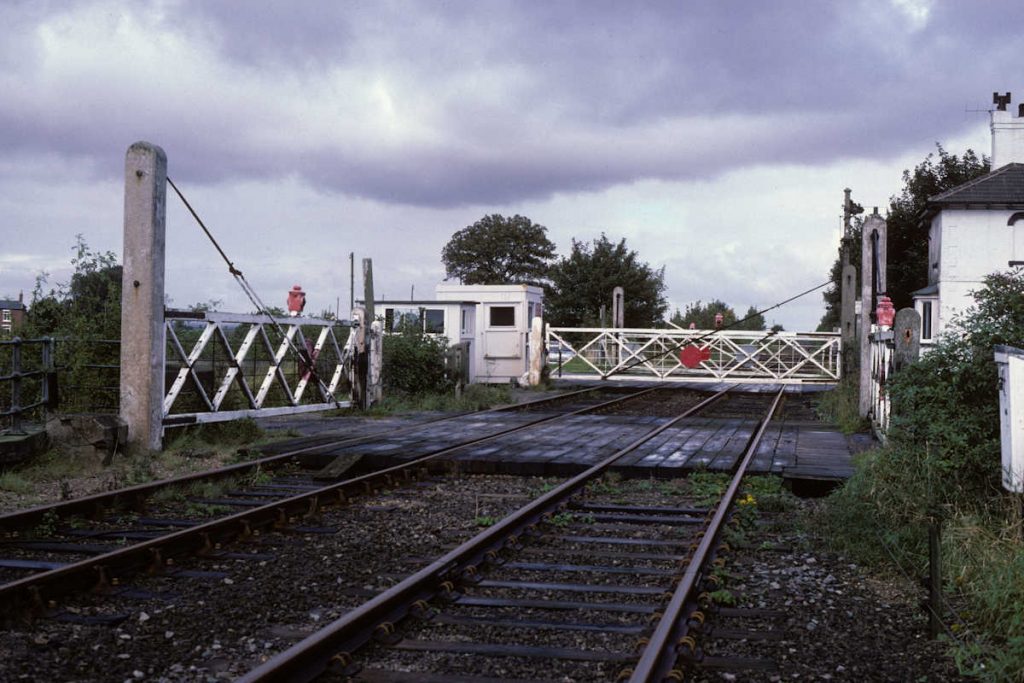
Originally opened as Hob Hole station in 1848, after the nearby Hob Hole Drain, Old Leake station never generated significant traffic and closed to passengers in September 1956. However, it did possess very attractive double level crossing gates, seen on September 26th 1987. By this time the original signal box had been replaced by the makeshift structure between the gates. Photo: Alan Jones.
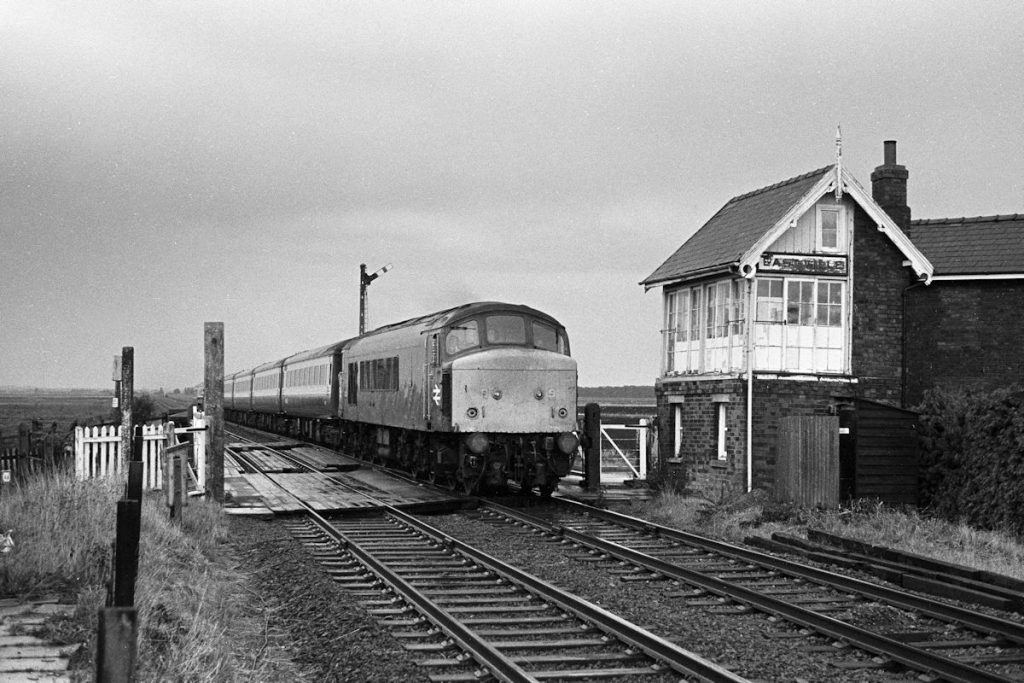
East Ville Signal Box was in a very poor state of repair by the 1980s and was developing the distinctive 'lean' of many structures along the line. After a torrential downpour BR Class 45 No. 45115, recently displaced from the Midland Main Line by the arrival of High Speed Trains, heads past East Ville on Saturday September 10th 1983 with the 13.00 (Summer Saturdays Only) Skegness to Derby. Although signalled, East Ville was only a crossing box and not a block section, which ran from Old Leake to Bellwater Junction. Photo: Alan Jones.
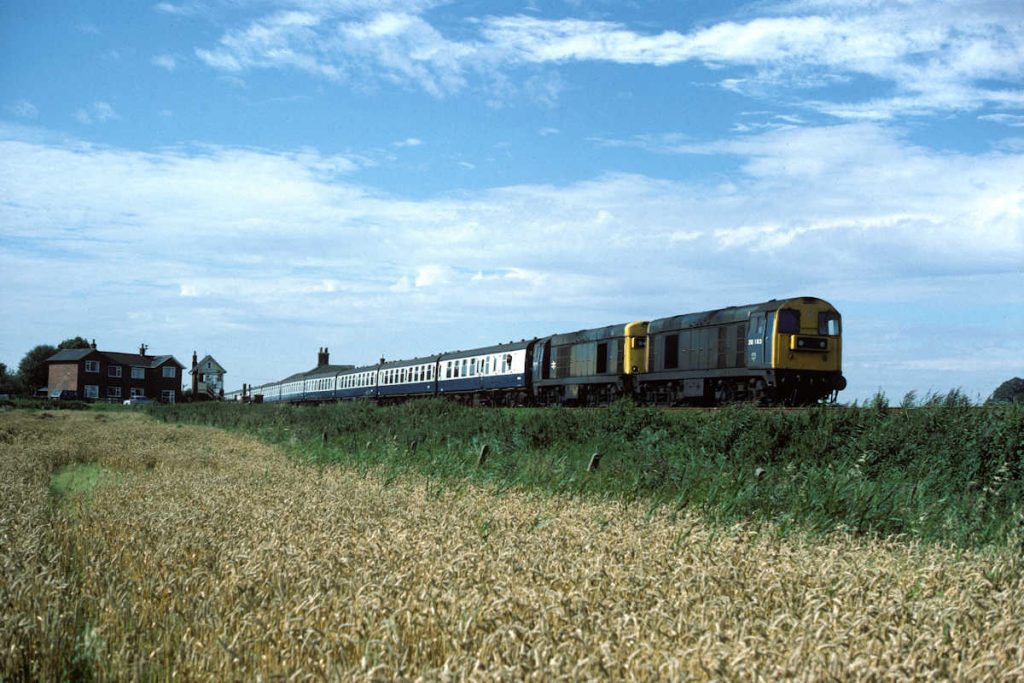
English Electric Class 20s Nos. 20163 and 20185 take a break from hauling mineral wagons around the East Midlands to work the Summer Saturday 08.16 Leicester to Skegness, seen passing East Ville on August 31st 1985. This working was a very regular Class 20 turn in the 80s and developed something of a cult following amongst enthusiasts. Photo: Alan Jones.
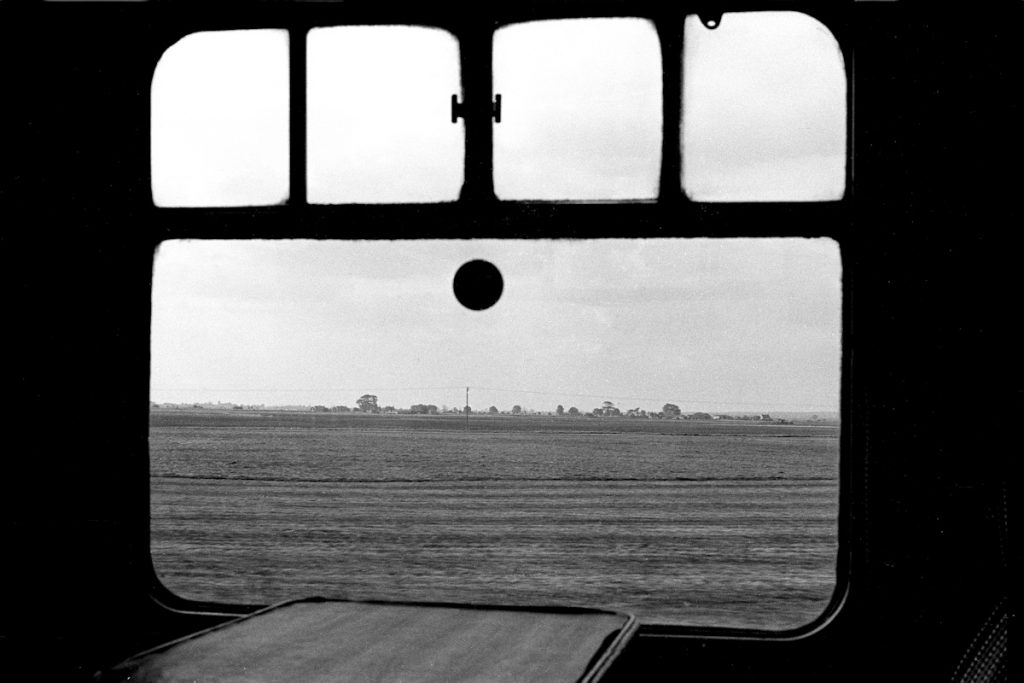
One of the best travelling experiences has to be from either a Tourist Second Open (TSO) or First Open (FO) BR Mark 1 carriage with Commonwealth bogies. This view from the former epitomises the photographer's memories of the Skegness line on Summer Saturdays - curled-up edges of table surface, the encrusted grime around the edges of the window panes, the smell of old tobacco (even though a non-smoking carriage!) and the flat Lincolnshire landscape. The train is the 15.35 (Summer Saturdays Only) Skegness to Peterborough, near East Ville, and is effectively an advertised empty stock working from the earlier 09.36 Kings Cross to Skegness on the last day of the season, Saturday 17th September 1983. Photo: Alan Jones.
Bellwater Junction
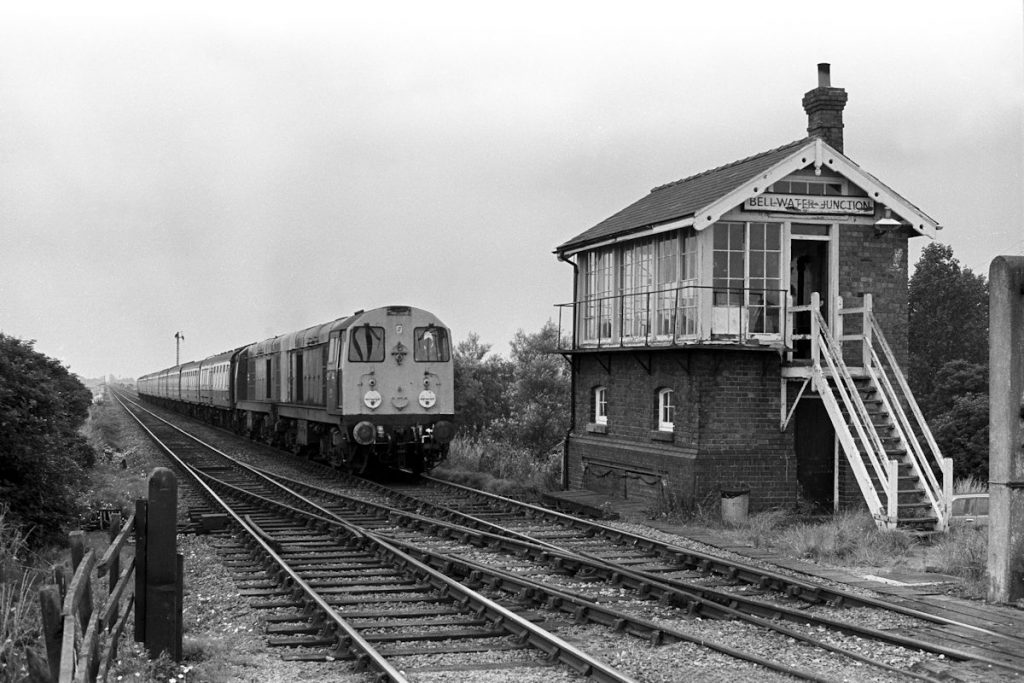
The classic Bellwater Junction view showing Class 20s Nos. 20041 and 20113 on the 08.16 (Summer Saturdays) Leicester to Skegness on August 4th 1984. The box was opened in 1913 when the 'New Line' to Coningsby Junction opened and was the Great Northern's final design of signal box. The bargeboards show a little craftsmanship, and although the nameboard at the far end is in the traditional cast letter style of the Great Northern, the board at this end is painted (and subject to advanced decay). Photo: Alan Jones.
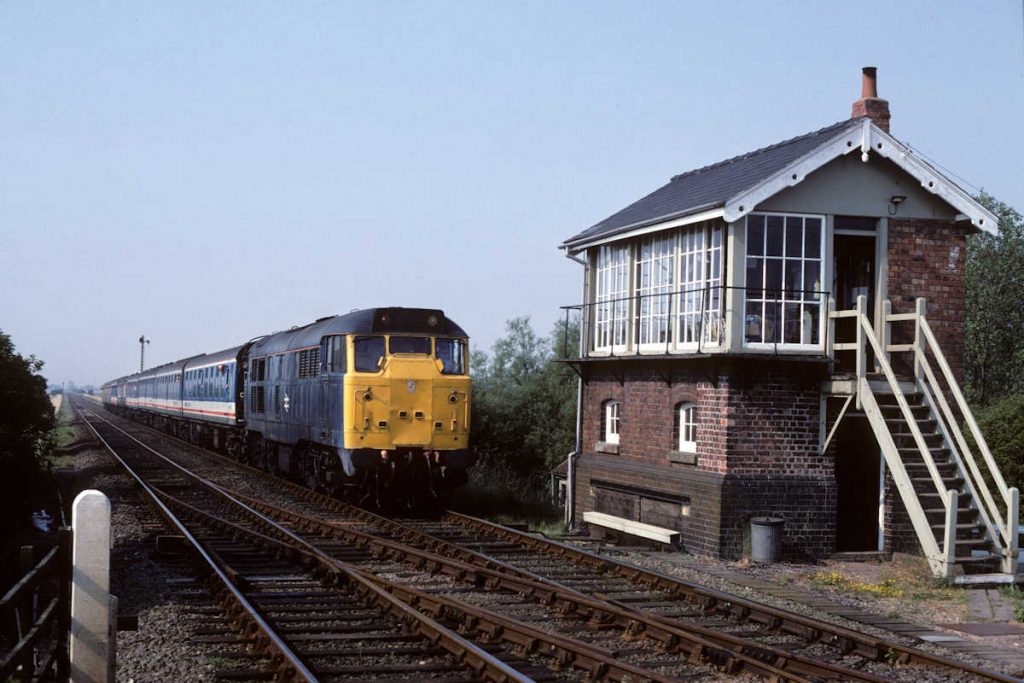
Bellwater Junction Signal Box was refurbished in the late 1980s and although it lost its nameboard above the entrance, the majority of the Box remained in tact. The impact of sectorisation is beginning to be seen as Network South East-liveried stock now forms part of the 06.30 Sheffield to Skegness behind 31257 on August 4th 1990. Photo: Alan Jones.
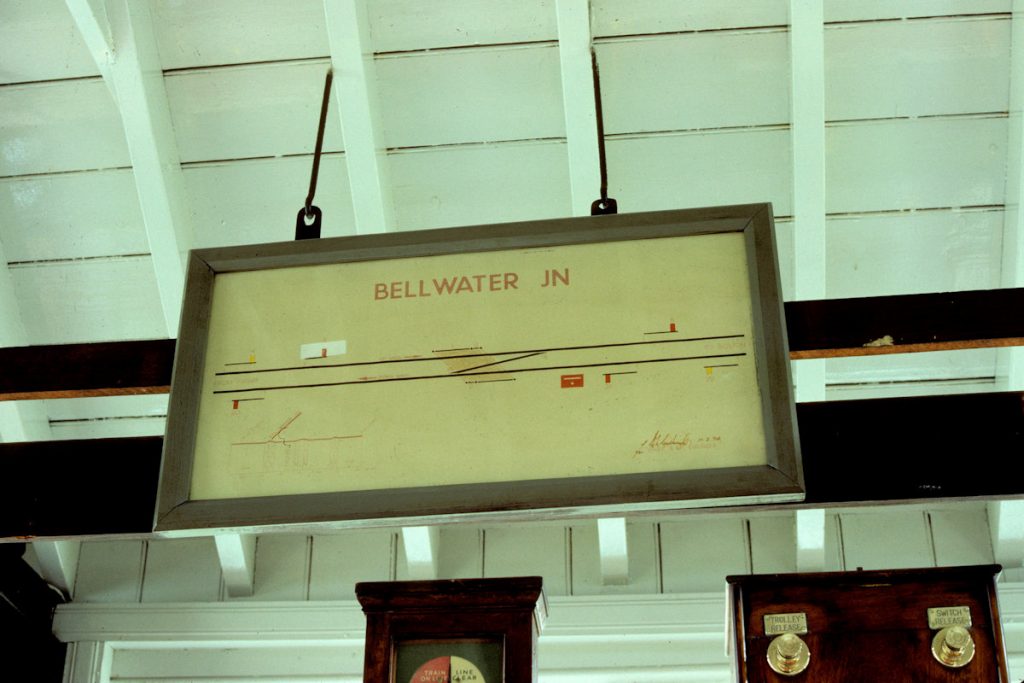
The simple track and signalling layout at Bellwater Junction, following closure of the New Line in October 1970, comprises a Distant, Home and Starter signal in the Up and Down directions. The trailing crossover is unsignalled and would be worked by flags in the event of an emergency. The diagram can be seen in the bottom left corner to be dated 11th February 1974. Photo: Alan Jones, with permission from British Rail.
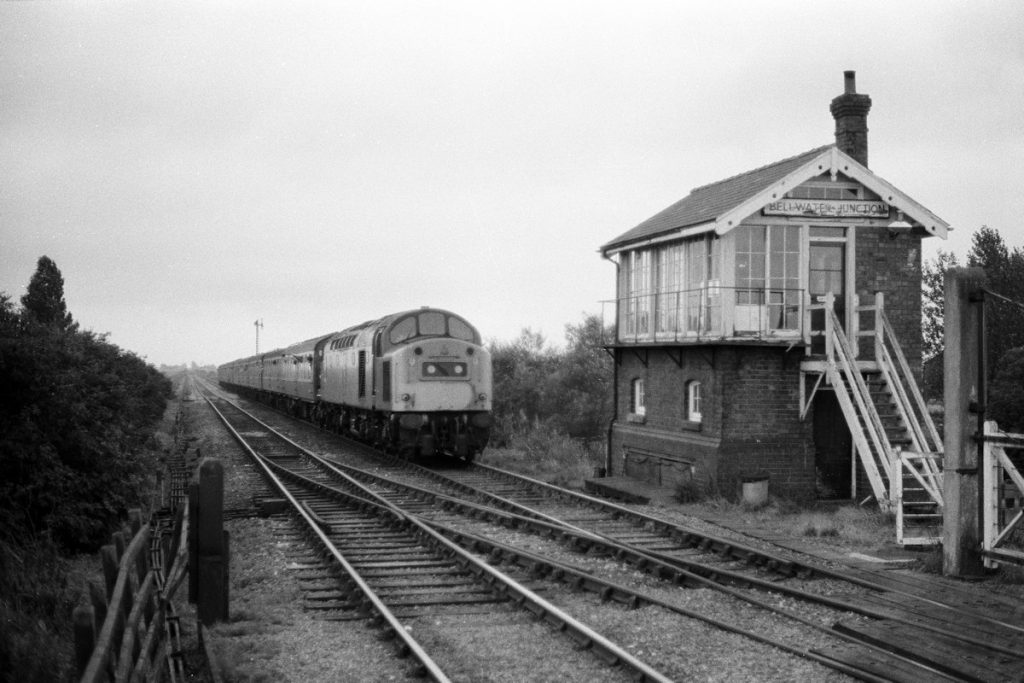
Although of poor quality, this photograph is included because of its historical significance. Taken in the most appalling weather on September 15th 1984, the last day of the season, it shows Class 40 No. 40181 heading the 08.15 (SO) Manchester Piccadilly to Skegness past Bellwater Junction - the working that brought to an end Class 40 traction to Skegness. In the following months, all Class 40s apart from those retained for the Crewe station re-modelling project were withdrawn, and this iconic locomotive class which played such an important part from the Pilot Scheme onwards, disappeared from the network. Photo: Alan Jones.
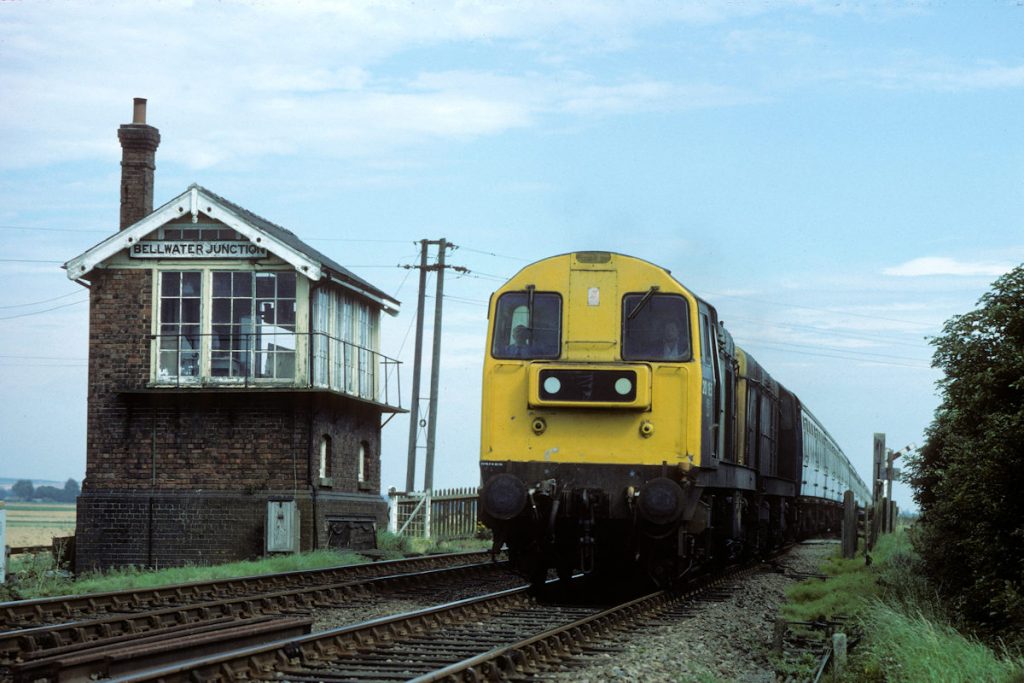
The Southern end of Bellwater Junction Signal Box had a nameboard made in the traditional Great Northern style, with individual cast letters screwed onto the board, as seen on August 31st 1985. Passing this delightful scene on their way back to Leicester are 20185 and 20163 with 1M02, the 12.05 (Summer Saturdays Only) from Skegness. Note the gradient profile of the track as it crosses Bellwater Drain and drops down on either side. Photo: Alan Jones, with permission from British Rail.
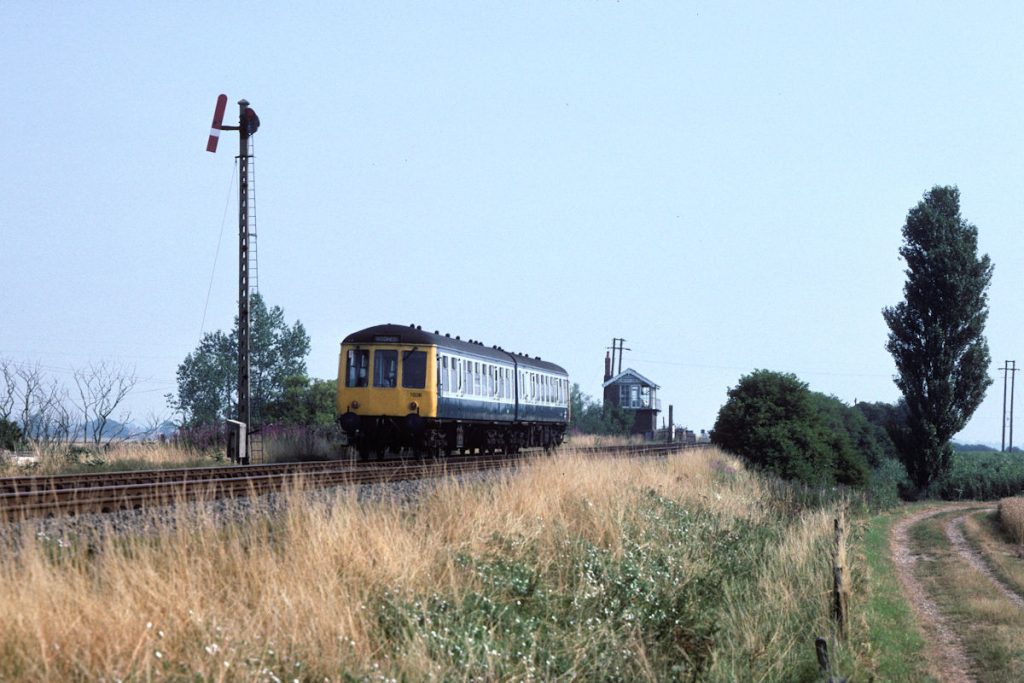
An unusual view of Bellwater Junction could be found from the farm track that ran along the Up side of the line, South of the Box. A two-car unit just fits between the Down Home and the Box, and on a hot and hazy August 4th 1990, Tyseley-based Class 114 set T026 (54010 and 53006) makes for a classic Lincolnshire scene with the 08.10 Nottingham to Skegness. Photo: Alan Jones.
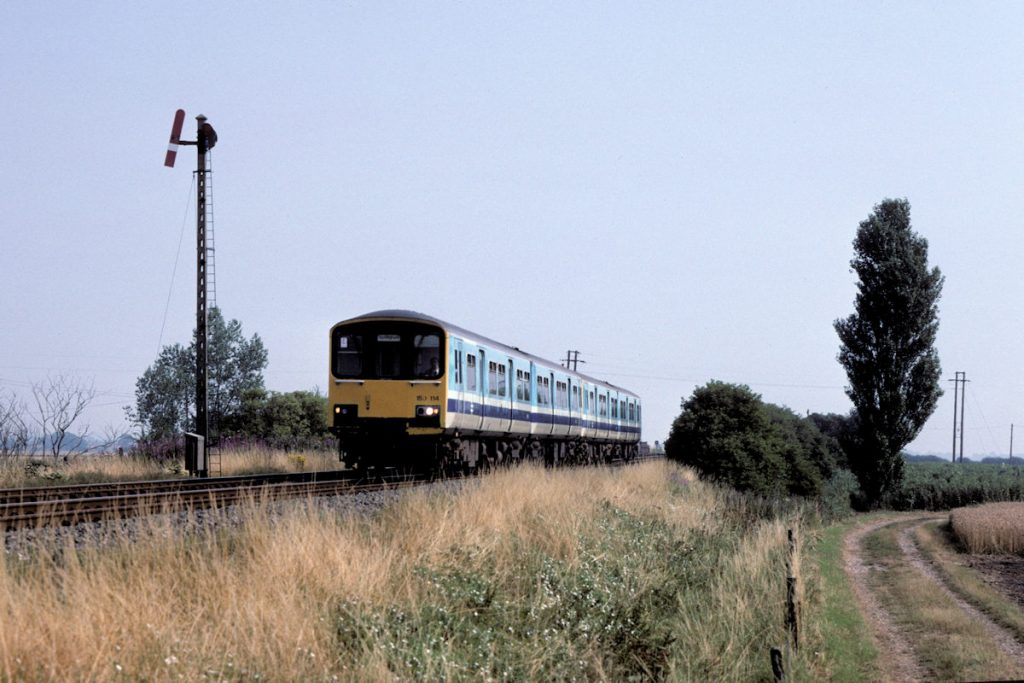
There is something a little incongruous about second generation multiple unit stock and Great Northern Railway Somersault signals! Nonetheless, Class 150/1 units Nos. 150114 and 150123 make a pleasant sight passing Bellwater Junction on Saturday August 4th 1990 with the 10.03 Skegness to Nottingham. Photo: Alan Jones.
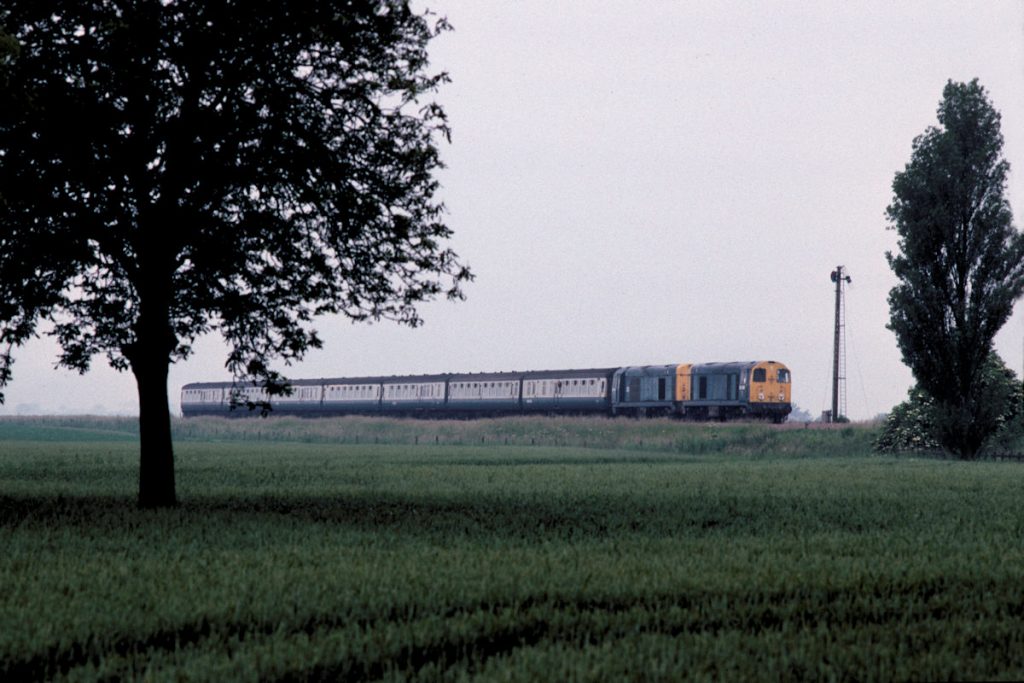
By the early 1990s, the number of Summer Saturday trains to Skegness was beginning to reduce and Class 20s and Mark 1 stock were increasingly rare. However, July 6th 1991 did produce a pair of 20s, including one of the original Pilot Scheme locomotives, seen at Bellwater Junction as 20081 and 20016 work the 06.30 (SO) Sheffield to Skegness. Photo: Alan Jones.
Little Steeping
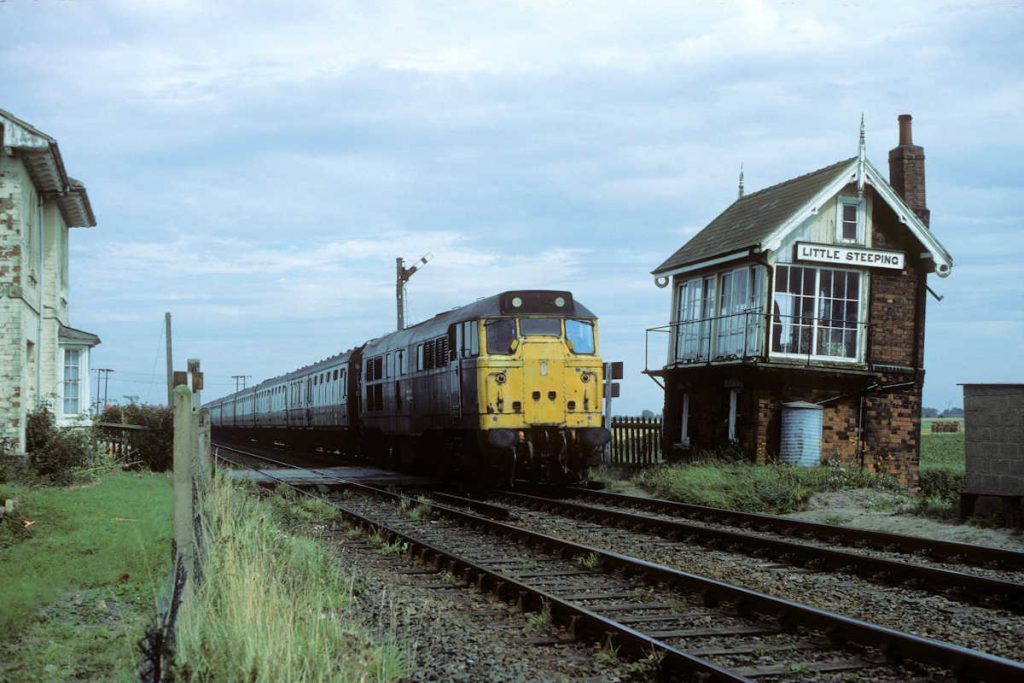
The friendly owners of the former station house at Little Steeping offered an opportunity to photograph 31247 from their garden as it worked the 13.30 (SO) Skegness to Leeds on August 31st 1985. Little Steeping Box became increasingly unsafe as it slid further into the marsh, but all the while it retained its delightful Great Northern characteristics, including original nameboards, bargeboards and both finials. Curiously, although the lean of the Box is pronounced, the chimney seems to be leaning in the opposite direction! Photo: Alan Jones.

